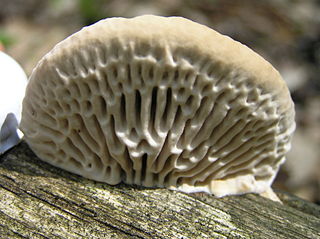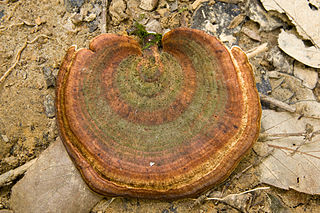
Chamonix-Mont-Blanc, more commonly known as Chamonix, is a commune in the Haute-Savoie department in the Auvergne-Rhône-Alpes region of Southeastern France. It was the site of the first Winter Olympics in 1924. In 2017, it had a population of 8,611.

Clarence Eugene "Hank" Snow was a Canadian-American country music artist. Most popular in the 1950s, he had a career that spanned more than 50 years, he recorded 140 albums and charted more than 85 singles on the Billboard country charts from 1950 until 1980. His number-one hits include the self-penned songs "I'm Moving On", "The Golden Rocket" and "The Rhumba Boogie" and famous versions of "I Don't Hurt Anymore", "Let Me Go, Lover!", "I've Been Everywhere", "Hello Love", as well as other top 10 hits.

Sir Topham Hatt, also known as The Fat Controller, is a fictional character in The Railway Series books written by the Reverend W. Awdry and his son, Christopher Awdry. In the first two books in the series he is known as The Fat Director, and as of the third book he becomes The Fat Controller, as the railway has been nationalised. Sir Topham Hatt's full name is revealed in the foreword to the 1951 book Henry the Green Engine.

Justicia is a genus of flowering plants in the family Acanthaceae. It is the largest genus within the family, encompassing around 700 species with hundreds more as yet unresolved. They are native to tropical to warm temperate regions of the Americas, India and Africa. The genus serves as host to many butterfly species, such as Anartia fatima. Common names include water-willow and shrimp plant, the latter from the inflorescences, which resemble a shrimp in some species. The generic name honours Scottish horticulturist James Justice (1698–1763). They are closely related to Pachystachys.

The Principality of Serbia was a semi-independent state in the Balkans that came into existence as a result of the Serbian Revolution, which lasted between 1804 and 1817. Its creation was negotiated first through an unwritten agreement between Miloš Obrenović, leader of the Second Serbian Uprising, and Ottoman official Marashli Pasha. It was followed by the series of legal documents published by the Porte in 1828, 1829 and finally, 1830 — the Hatt-i Sharif. Its de facto independence ensued in 1867, following the expulsion of all Ottoman troops from the country; its independence was recognized internationally in 1878 by the Treaty of Berlin. In 1882 the country was elevated to the status of kingdom.

The Imperial Reform Edict was a February 18, 1856 edict of the Ottoman government and part of the Tanzimat reforms. The decree from Ottoman Sultan Abdulmejid I promised equality in education, government appointments, and administration of justice to all regardless of creed. The decree is often seen as a result of the influence of France and Britain, which assisted the Ottoman Empire against the Russians during the Crimean War (1853–1856) and the Treaty of Paris (1856) which ended the war.

Cissonius was an ancient Gaulish/Celtic god. After Visucius, Cissonius was the most common name of the Gaulish/Celtic Mercury; around seventeen inscriptions dedicated to him extend from France and Southern Germany into Switzerland.

Bazzania is a genus of liverwort in the family Lepidoziaceae. It contains the following species:

Daedalea is a genus of fungi in the family Fomitopsidaceae. The genus was circumscribed in 1801 by mycologist Christian Hendrik Persoon, based on the type D. quercina and four other species. The generic name is derived from the Ancient Greek δαιδαλεος.

Coriolopsis is a genus of fungi in the family Polyporaceae. It was circumscribed by American mycologist William Alphonso Murrill in 1905. The genus is cosmopolitan, with most species in tropical areas. The generic name combines the name Coriolus with the Ancient Greek word ὄψις ("appearance").

Microporus is a genus of fungi in the family Polyporaceae. The genus has a widespread distribution and, according to a 2008 estimate, contains 11 species. The genus name combines the Ancient Greek words μικρός ("small") and πόρος ("pore").

Emilie Demant Hatt was a Danish artist, writer, ethnographer, and folklorist. Her area and of interest and expertise was the culture and way of life of Sámi people.

Hatt-i humayun, also known as hatt-i sharif, is the diplomatics term for a document or handwritten note of an official nature composed by an Ottoman Sultan. The terms come from hatt, hümayun (imperial) and şerif. These notes were commonly written by the Sultan personally, although they could also be transcribed by a palace scribe. They were written usually in response to, and directly on, a document submitted to the sultan by the grand vizier or another officer of the Ottoman government. Thus, they could be approvals or denials of a letter of petition, acknowledgements of a report, grants of permission for a request, an annotation to a decree, or other government documents. Hatt-ı hümayuns could be composed from scratch, rather than as a response to an existing document. After the Tanzimat reform (1856), aimed to modernize the Ottoman Empire, hatt-ı hümayuns of the routine kind were supplanted by the practice of irâde-i seniyye, in which the Sultan's spoken response was recorded on the document by his scribe.

Thomas & Friends: Day of the Diesels is a 2011 CGI feature-length special and film of the TV series, Thomas & Friends. The film's CGI animation is by Nitrogen Studios Canada, Inc and HIT Entertainment.

Riccardia is a plant genus in the liverwort family Aneuraceae.

Hilda May Hatt was a British athlete. She competed in the high jump, long jump and 100 yd hurdles and relay 4x175 metres. She participated in the 1921 Women's Olympiad, 1922 Women's Olympiad and the 1922 Women's World Games and 1922 Women's World Games and won two gold, four silver and one bronze medals.

Doris Brabham Hatt, a painter and printmaker, was a pioneer of Modernism in Britain.
Cleveaceae is a family of liverworts belonging to the order Marchantiales.

















